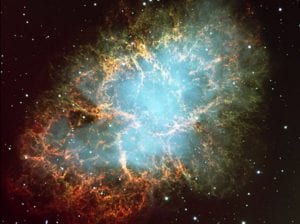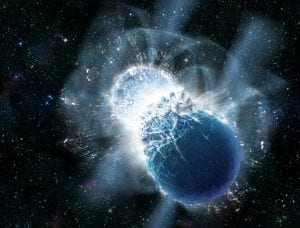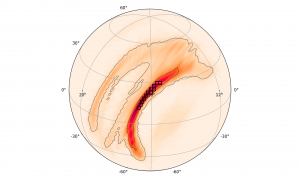Some select press releases are below based on work from the Fong Group.

Deep Gemini image of FRB 20240209A. Image Credit: T. Eftekhari (Northwestern)
First fast radio burst traced to old, dead, elliptical galaxy
January 21, 2025
Two mysterious fast radio bursts originated from wildly different places in space
January 24, 2025
Hubble Finds Weird Home of Farthest Fast Radio Burst
‘Blob-like’ home of farthest-known fast radio burst is collection of seven galaxies
Hubble Space Telescope reveals curious birthplace of record-breaking blast, January 9, 2024
Astronomers say they’ve traced the origin of powerful and mysterious radio signal
January 11, 2024

Credit: Aaron M. Geller | Northwestern | CIERA and IT Research Computing and Data Services. Image created by Aaron M. Geller in Photoshop and Blender
NASA Missions Probe Game-Changing Cosmic Explosion
Surprise Kilonova Upends Established Understanding of Long Gamma-ray Bursts
Long Gamma-ray Bursts Can Be Generated by Neutron Star Mergers, Study Finds, December 7, 2022

Image Credits: Science – NASA, ESA, Alexandra Mannings (UC Santa Cruz), Wen-fai Fong (Northwestern). Fast radio bursts host galaxies.
Intense radio blasts traced to galaxies’ spiral arms
Bursts likely come from magnetars, researchers now believe
May 20, 2021
HUBBLE TRACKS DOWN FAST RADIO BURSTS TO GALAXIES’ SPIRAL ARMS
Astronomers track down fast radio bursts to galaxies’ spiral arms
These mysterious flashes of radio energy that disappear in the blink of an eye originate from young, massive galaxies

Image Credit: NASA, ESA, W. Fong (Northwestern University), and T. Laskar (University of Bath, UK) The glow from a kilonova caused by the merger of two neutron stars.
NASA’s Hubble Sees Unexplained Brightness from Colossal Explosion
Neutron-Star Collision Releases Puzzling Burst of Infrared Light
November 12, 2020
Birth of magnetar from colossal collision potentially spotted for first time
Neutron star merger results in magnetar with brightest kilonova ever observed
Unexplained Brightness From Colossal Explosion

Image Credit: International Gemini Observatory/NOIRLab/NSF/AURA/K. Paterson & W. Fong (Northwestern University). The afterglow of SGRB181123B, captured by the Gemini North telescope. The afterglow is marked with a circle.
Short Gamma Ray Burst Leaves Most-distant Optical Afterglow Ever Detected
Rare event occurred 10 billion lightyears away, 3.8 billion years after the Big Bang
July 14, 2020
Astronomers witness ‘teenage’ years of our universe in explosion
Afterglow sheds light on the nature, origin of neutron star collisions
Researchers use Hubble to capture deepest optical image of first neutron star merger
September 9, 2019
SAGUARO: Using Arizona Telescopes to Observe the Most Dramatic Collisions in Space
August 15, 2019
Enduring ‘radio rebound’ powered by jets from gamma-ray burst
Researchers create first-ever movie of cosmic explosion
July 26, 2018
Peering into the Cosmic Maelstrom
Following the October 16, 2017 announcement of the first-ever observation of a binary neutron star inspiral and merger, Northwestern’s astronomy research center, CIERA, held a discussion with the Northwestern scientists behind the discovery. Professors Vicky Kalogera, Shane Larson, Raffaella Margutti and Wen-fai Fong describe their roles and experiences in the making of this ground-breaking discovery. Event moderated by President & CEO of Adler Planetarium, Michelle Larson.
November 28, 2017
Gold From Space? Neutron Star Collisions Called Likely Source Of Precious Metal On Earth
All of the gold on Earth might have come from cosmic crashes between super-dense dead stars, new research suggests.
July 18, 2013

Image Credit: NASA The Crab Nebula, the result of a star that exploded in 1054 AD, has a neutron start rotating at 30 times a second in its center. The collision of exceedingly rare neutron stars is now thought to be the source of the universe’s gold.
King Midas in space? Rare star collision produces gold.
Scientists from Harvard University have for the first time found concrete evidence that gold is produced in the collision of two extremely rare stars.
July 17, 2013

Image Credit: Dana Berry, SkyWorks Digital, Inc. The collision of two neutron stars can create rare elements like gold. Image released on July 17, 2013.



